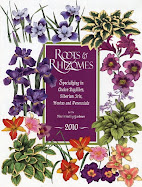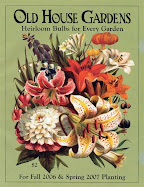Above: Arènes de Nîmes. Below: Maison Carrée
Photos taken in March 2017
Click here for more photos of Nîmes.
I went to Nîmes on March 7, 2017. I took the train from Montpellier & was there about 3 hours. I liked Nîmes. It was an upscale place. The old town is full of narrow streets with expensive shops in buildings with stone facades. The stone is a light yellow-beige that seemed to glow, even on that gray & windy day. The buildings are not as tall & the historic district is not as extensive as in Montpellier.
The most interesting things were the Roman arena & the Roman temple called the Maison Carrée, or square house. It's rectangular. Both are among the best-preserved Roman buildings anywhere. The arena can hold 24,000 spectators. The temple is large, but not huge. It is amazingly intact, built by the Emperor Augustus & dedicated to his 2 grandsons in 19 BC. The interior had been made into a small theater where I saw a 25-minute film about the birth of Nîmes in the Roman era, a docu-drama with actors playing historical figures, fairly well produced.
Click here for more photos of Nîmes.
I went to Nîmes on March 7, 2017. I took the train from Montpellier & was there about 3 hours. I liked Nîmes. It was an upscale place. The old town is full of narrow streets with expensive shops in buildings with stone facades. The stone is a light yellow-beige that seemed to glow, even on that gray & windy day. The buildings are not as tall & the historic district is not as extensive as in Montpellier.
The most interesting things were the Roman arena & the Roman temple called the Maison Carrée, or square house. It's rectangular. Both are among the best-preserved Roman buildings anywhere. The arena can hold 24,000 spectators. The temple is large, but not huge. It is amazingly intact, built by the Emperor Augustus & dedicated to his 2 grandsons in 19 BC. The interior had been made into a small theater where I saw a 25-minute film about the birth of Nîmes in the Roman era, a docu-drama with actors playing historical figures, fairly well produced.
The remains of villages in & around Nîmes date back as far as 1800 BC. Nîmes started out as a small, fortified Iron Age village. Sometime before 28 BC the village became the Colonia Nemausus, known because coins stamped with that name have been found. Nemausus was a very local god, apparently not worshiped anywhere else. Nemausus became the capital of the Roman province of Narbonensis during Emperor Augustus' 2nd visit there from 16 to 13 BC
The Arena of Nîmes was built around 70 AD. It was remodeled in 1863 to serve as a bullring. It is now used for 2 annual bullfights, concerts & other public events. It measures 436 feet long and 331 feet wide, with an arena of 223 by 125 feet. At 69 feet tall, its exterior façade comprises 2 floors of 60 superimposed arches & an attic, separated by a cornice. At the top, drilled stones were positioned so that poles could could support a canopy. The interior is deeply atmospheric.
The Maison Carrée is extremely well preserved. It is a nearly textbook example of a Roman temple, as defined by Vitruvius in On Architecture, written during the first century BC. This is particularly interesting because the Maison Carrée illustrates the model for many significant buildings constructed in Europe & America from the 17th to 20th centuries.
The return to classical styles in architecture began with Andrea Palladio (1508–1580). Palladian architecture grew from Palladio's ideas based on the classical temple architecture of the Ancient Greeks & Romans. Palladianism got its start in Britain during the mid-17th century & then spread to the British colonies in North America. A famous example is Thomas Jefferson's Monticello in Virginia. I saw that building in the fall of 1973 with my father, an architect.
The Early Classical Revival style developed at the end of the 18th century took inspiration directly from the ancient buildings of Rome & Greece. While earlier styles were also inspired by classical forms, they used architectural details & did not recreate the look of ancient buildings. The Roman Classical Revival & Greek Revival style copied the form of Roman & Greek temples. It recalled the power & influence of the Roman Empire. Thomas Jefferson designed campus of the University of Virginia using ancient Roman temples as his guide.
The Neoclassical style is common in the United States. It was inspired by the World's Columbian Exposition held in 1893 in Chicago, which promoted renewed interest in classical forms of architecture. Neoclassical buildings have massive columns with classical capitals, topped by a front facing pediment. The arrangement of windows & doors is symmetrical. The Neoclassical style was most often used for courthouses, banks, churches, schools & mansions. My own high school was built in this style in 1912.
The Maison Carrée has a single cella (cell or room) & a deep porch on a high podium. The podium of the Maison Carrée is more than 9 feet high. The footprint measures about 87 by 44 feet at the base. The building has 6 Corinthian columns (acanthus leaf motifs on the capital) across the façade, 10 along each side & 6 across the back. The 10 columns of the portico (porch) are free standing, while the rest are attached to the cella.
The temple had an inscription that was removed in the Middle Ages. A reconstruction of the inscription in 1758 reads (in translation): To Gaius Caesar, son of Augustus, Consul; to Lucius Caesar, son of Augustus, Consul designate; to the princes of youth. The worship of the emperor & imperial family was not uncommon in the provinces. The Temple of Augustus & Livia located in Vienne is similar to the Maison Carrée. These temples show how much local elites invested to celebrate the emperor & his family.
The Maison Carrée has a single cella (cell or room) & a deep porch on a high podium. The podium of the Maison Carrée is more than 9 feet high. The footprint measures about 87 by 44 feet at the base. The building has 6 Corinthian columns (acanthus leaf motifs on the capital) across the façade, 10 along each side & 6 across the back. The 10 columns of the portico (porch) are free standing, while the rest are attached to the cella.
The temple had an inscription that was removed in the Middle Ages. A reconstruction of the inscription in 1758 reads (in translation): To Gaius Caesar, son of Augustus, Consul; to Lucius Caesar, son of Augustus, Consul designate; to the princes of youth. The worship of the emperor & imperial family was not uncommon in the provinces. The Temple of Augustus & Livia located in Vienne is similar to the Maison Carrée. These temples show how much local elites invested to celebrate the emperor & his family.
















































































